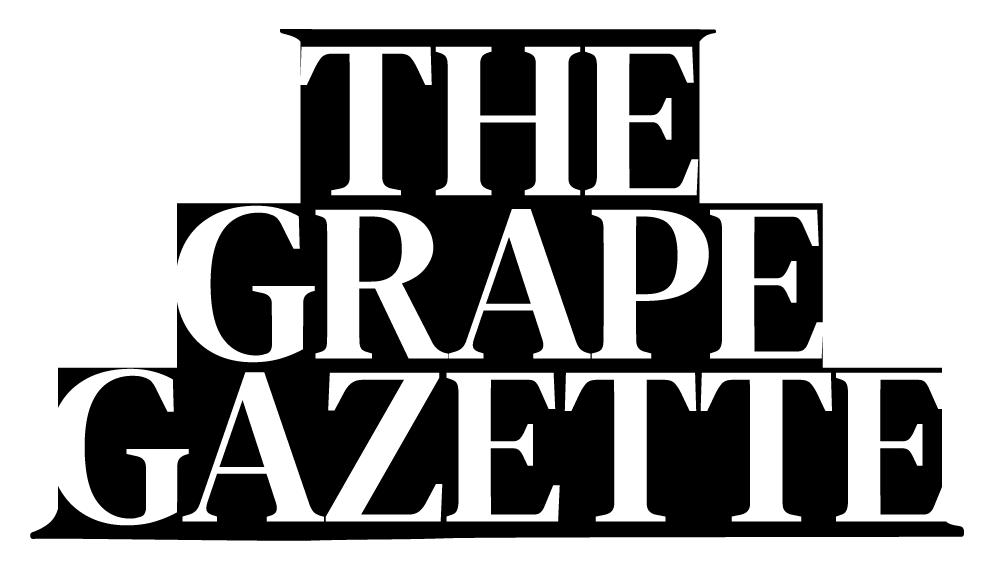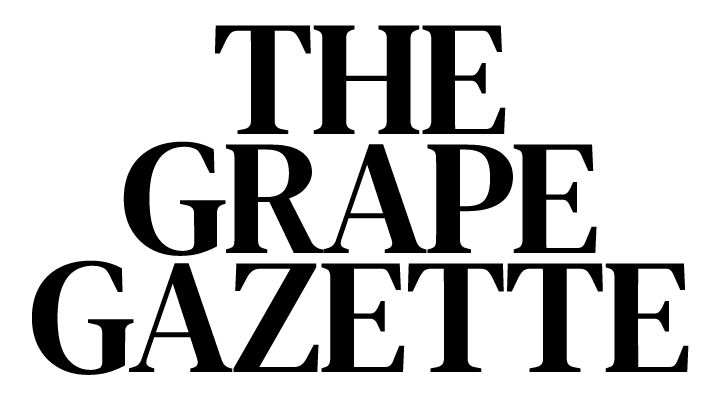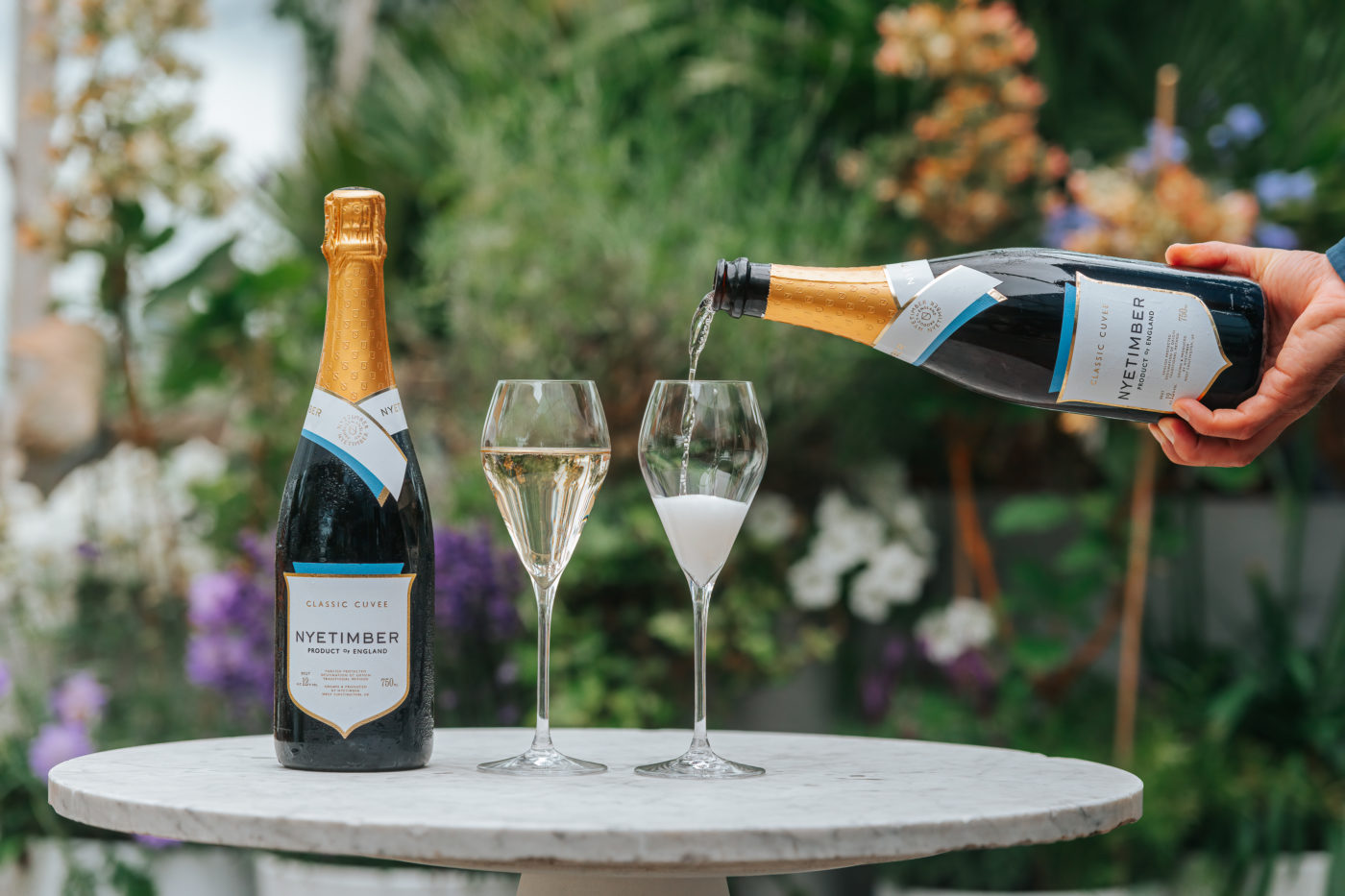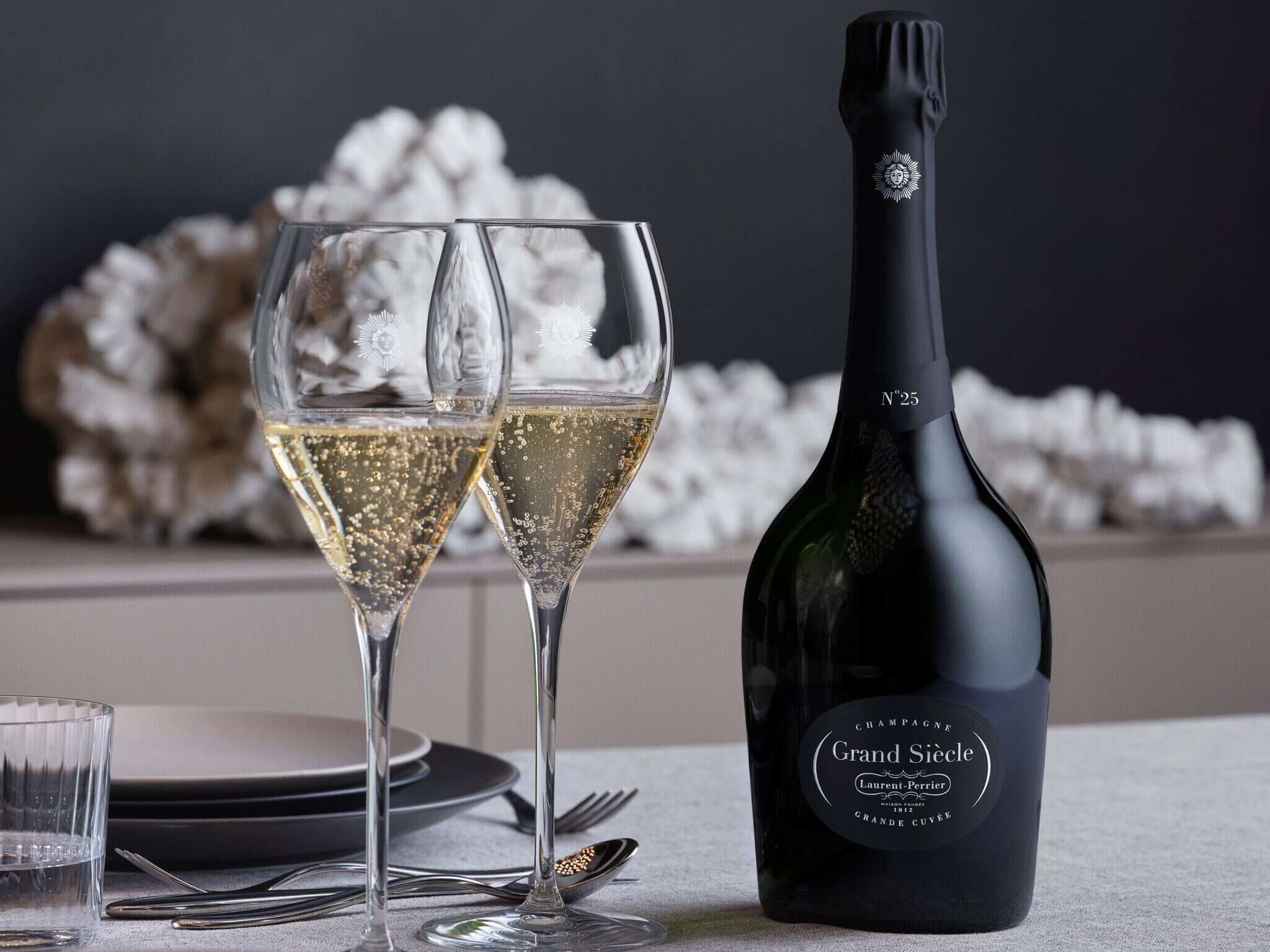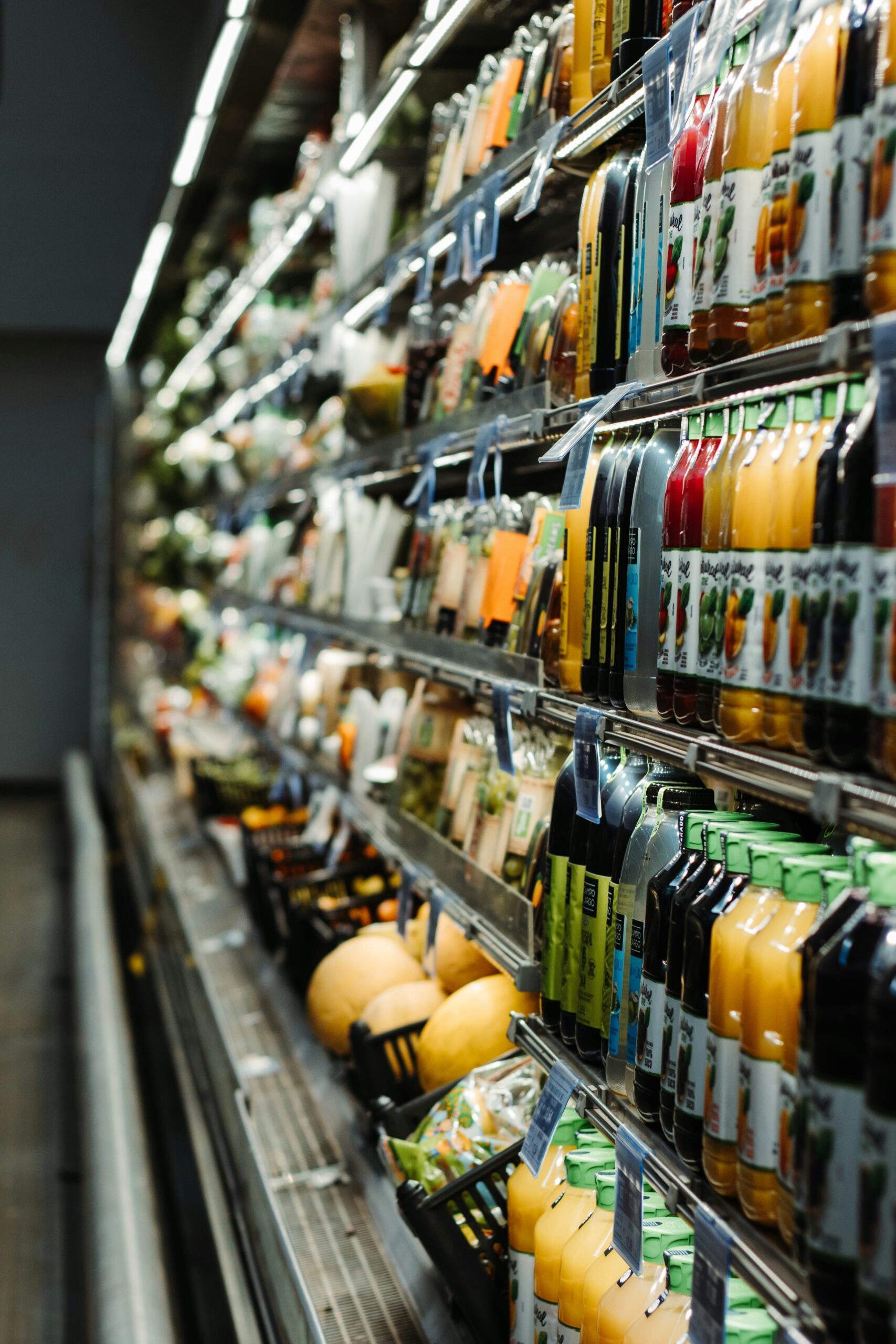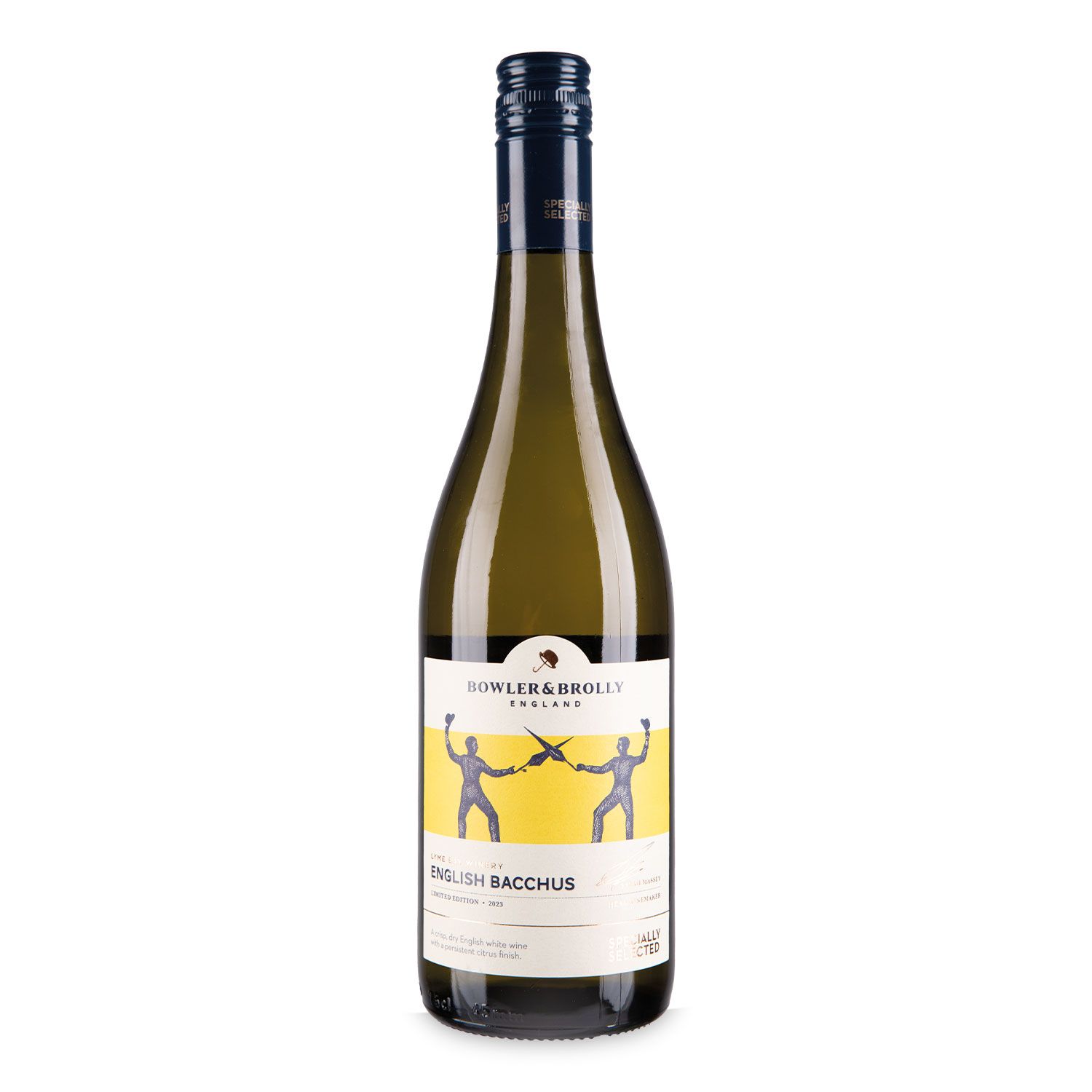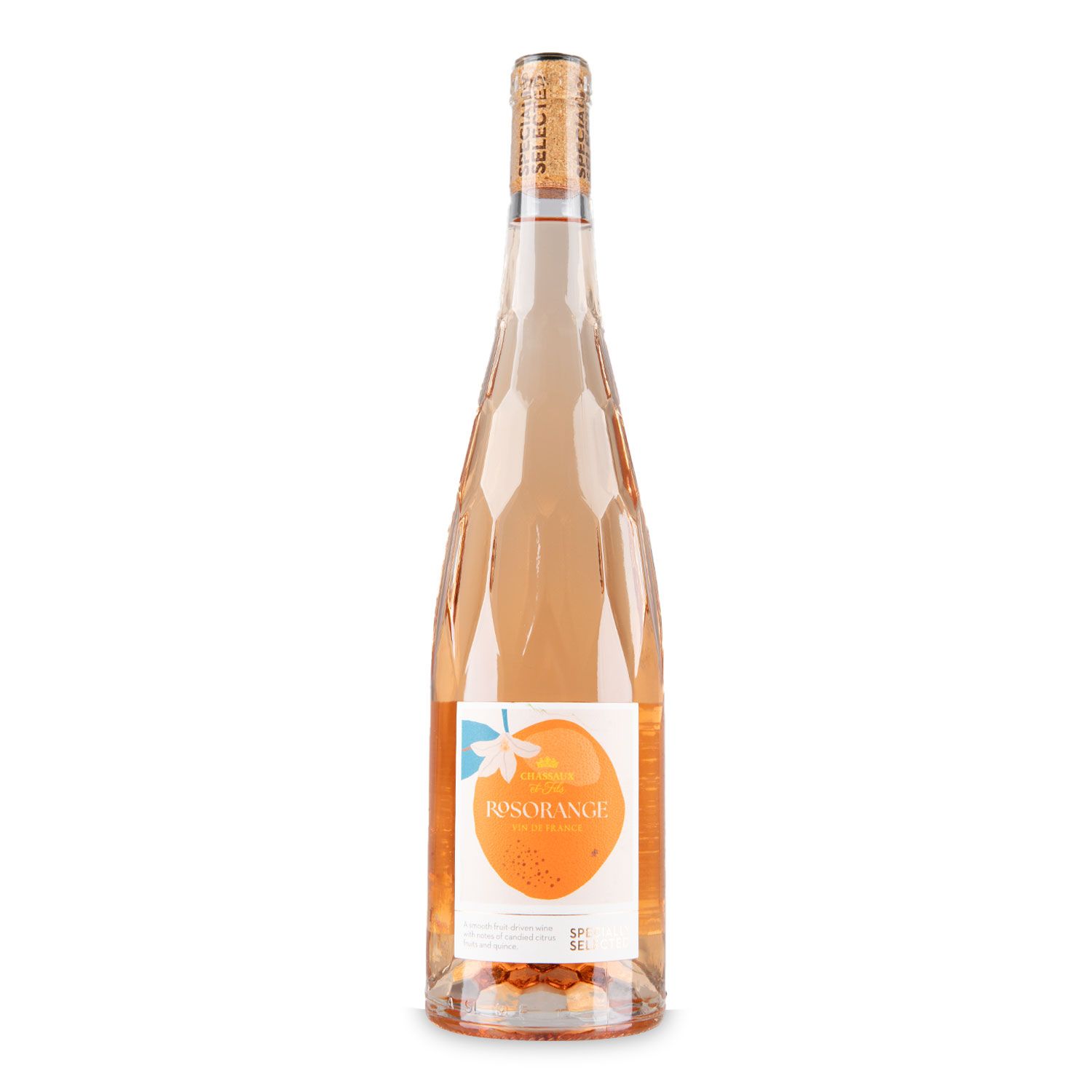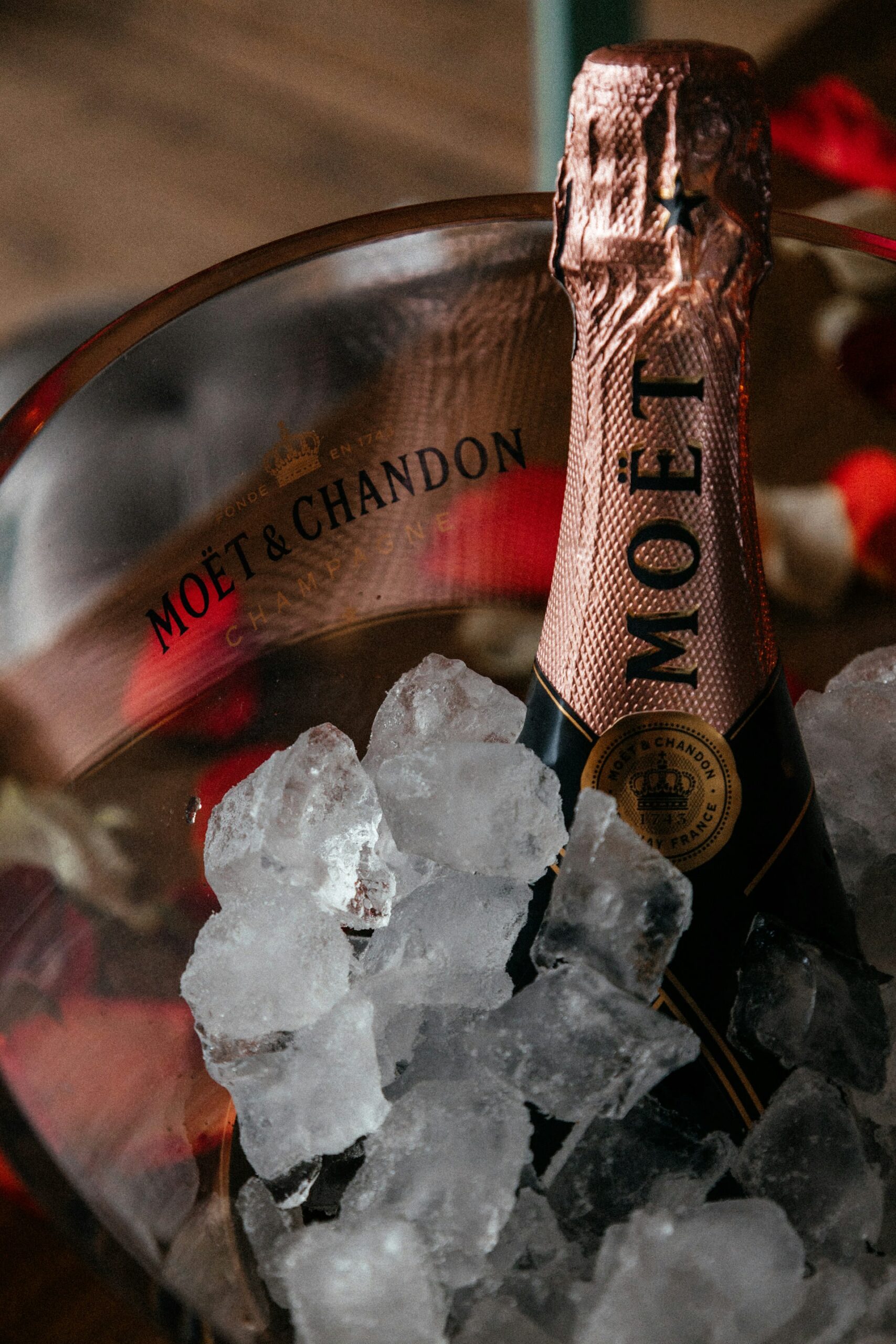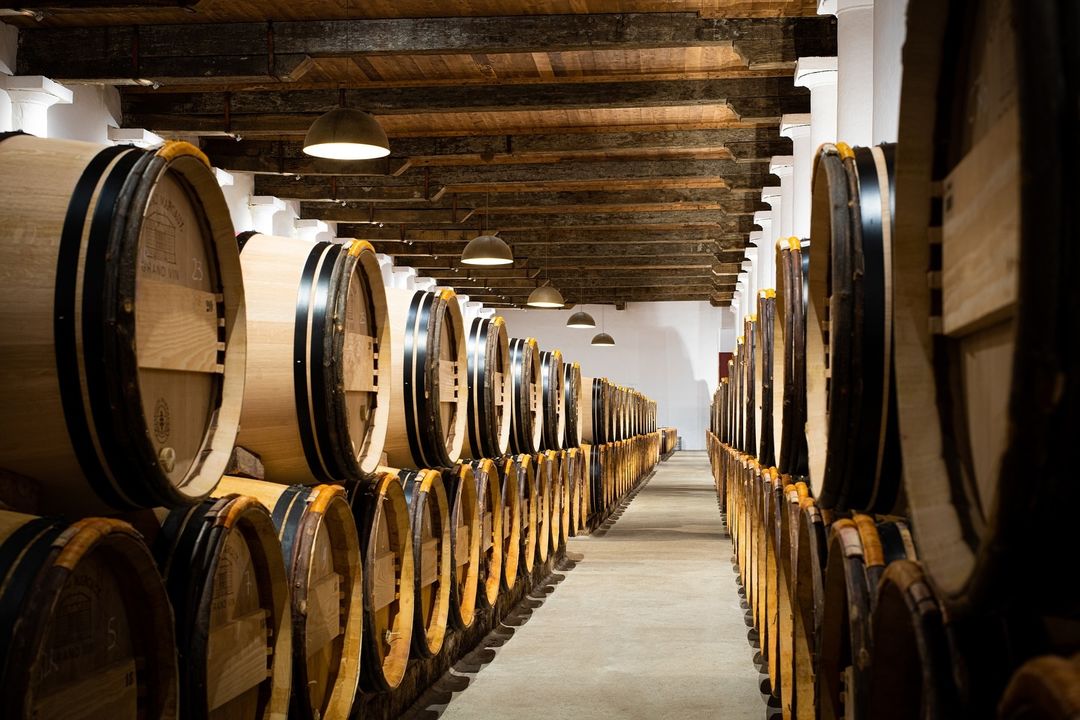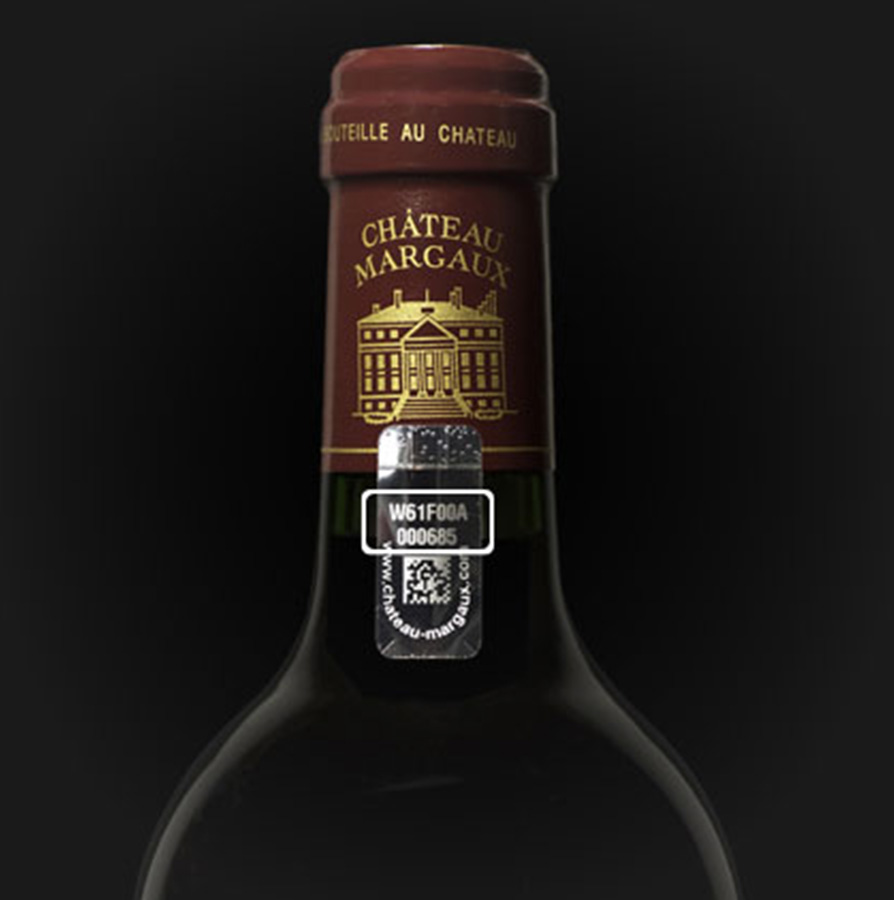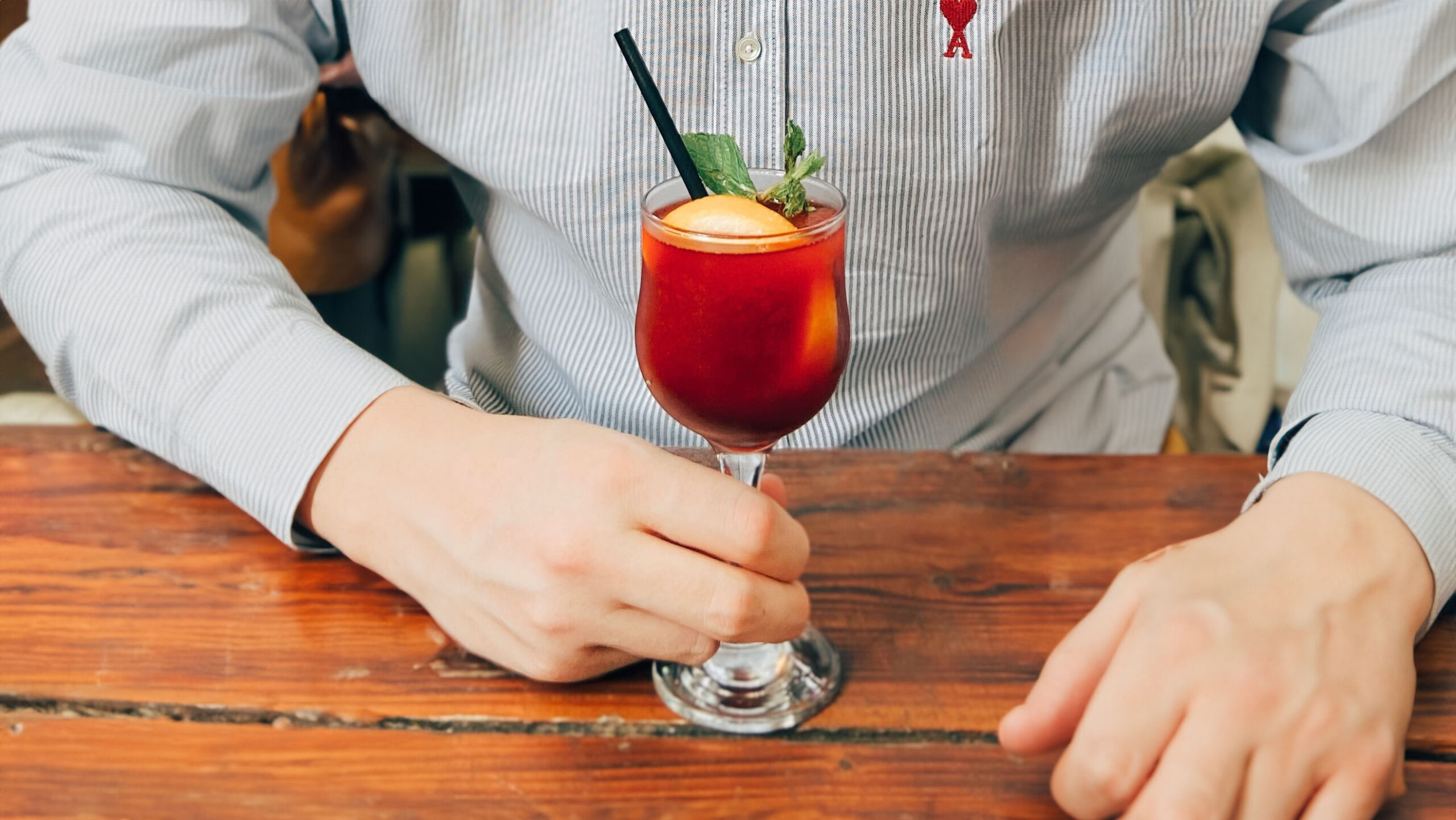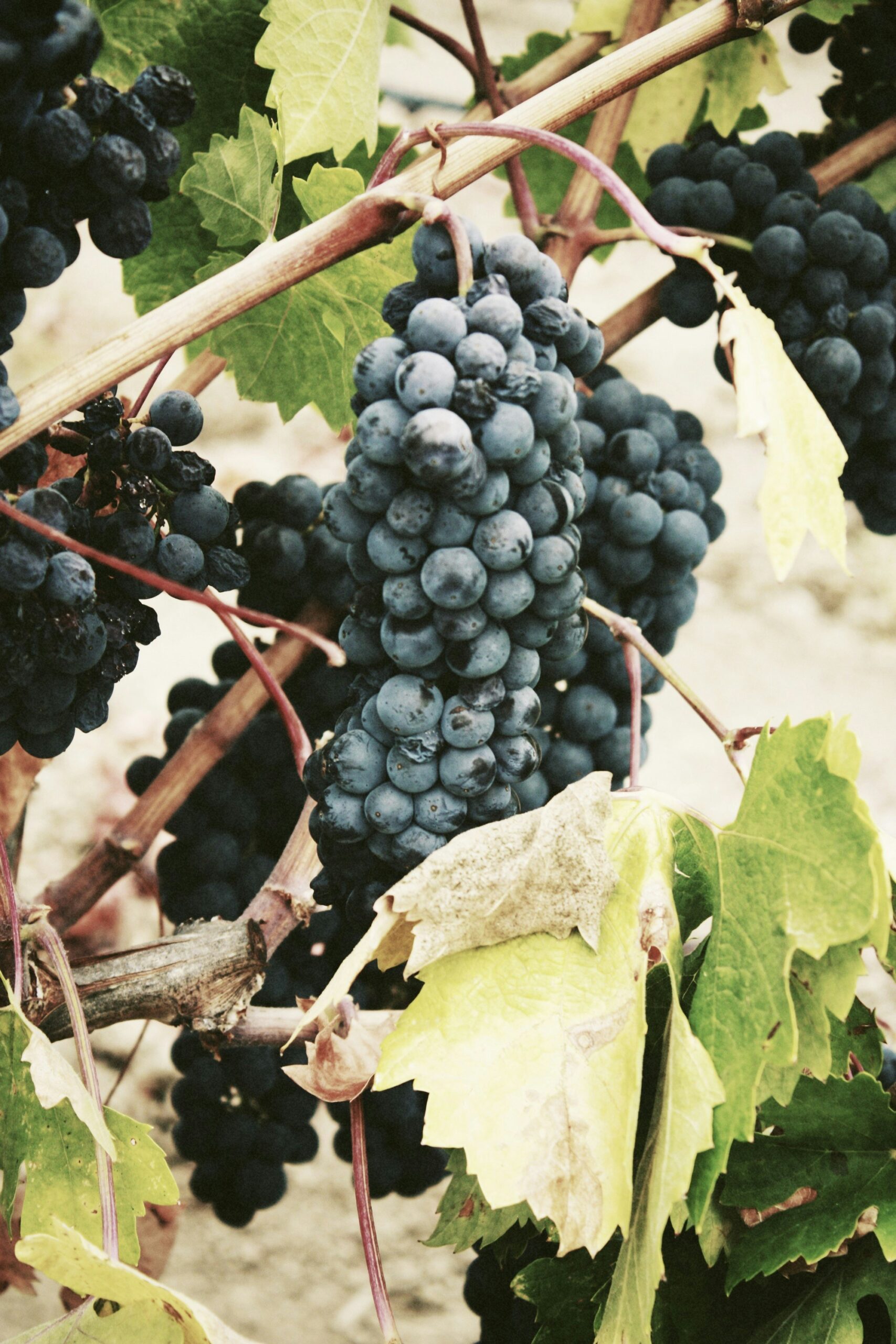Comparing English Sparkling Wines to Champagne: A Taste Test
It’s no secret that Champagne has held the crown of sparkling wines for centuries, but English sparkling wines are starting to challenge that status. When you have wines like Nyetimber and Gusbourne in the ring, you begin to realise how close the competition has become. This tasting was about exploring how two standout English bottles stack up against the French classics – Pol Roger and Taittinger. Here’s how it went.
The Wines
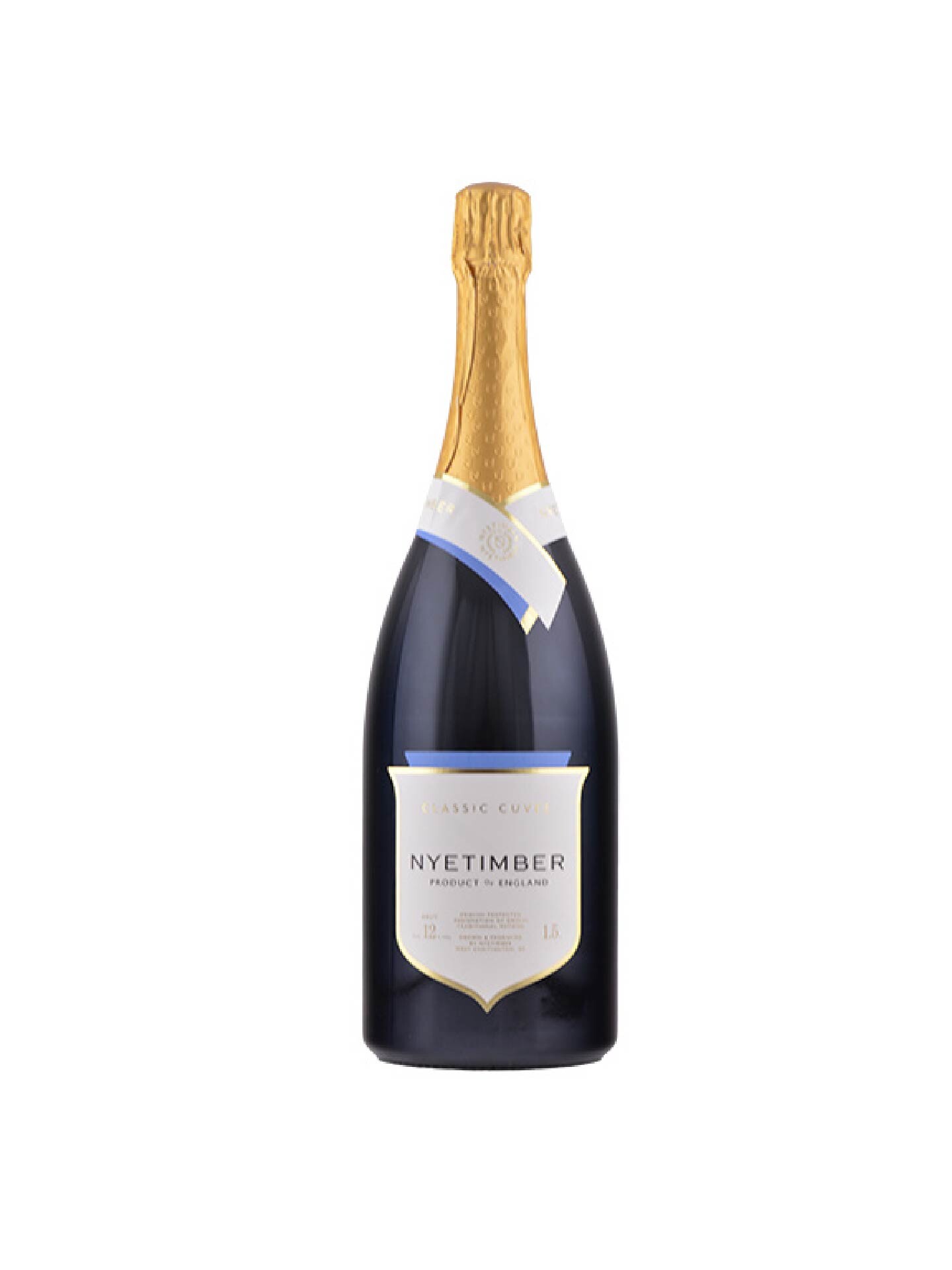
Nyetimber Classic Cuvée 2010
(West Sussex, England)
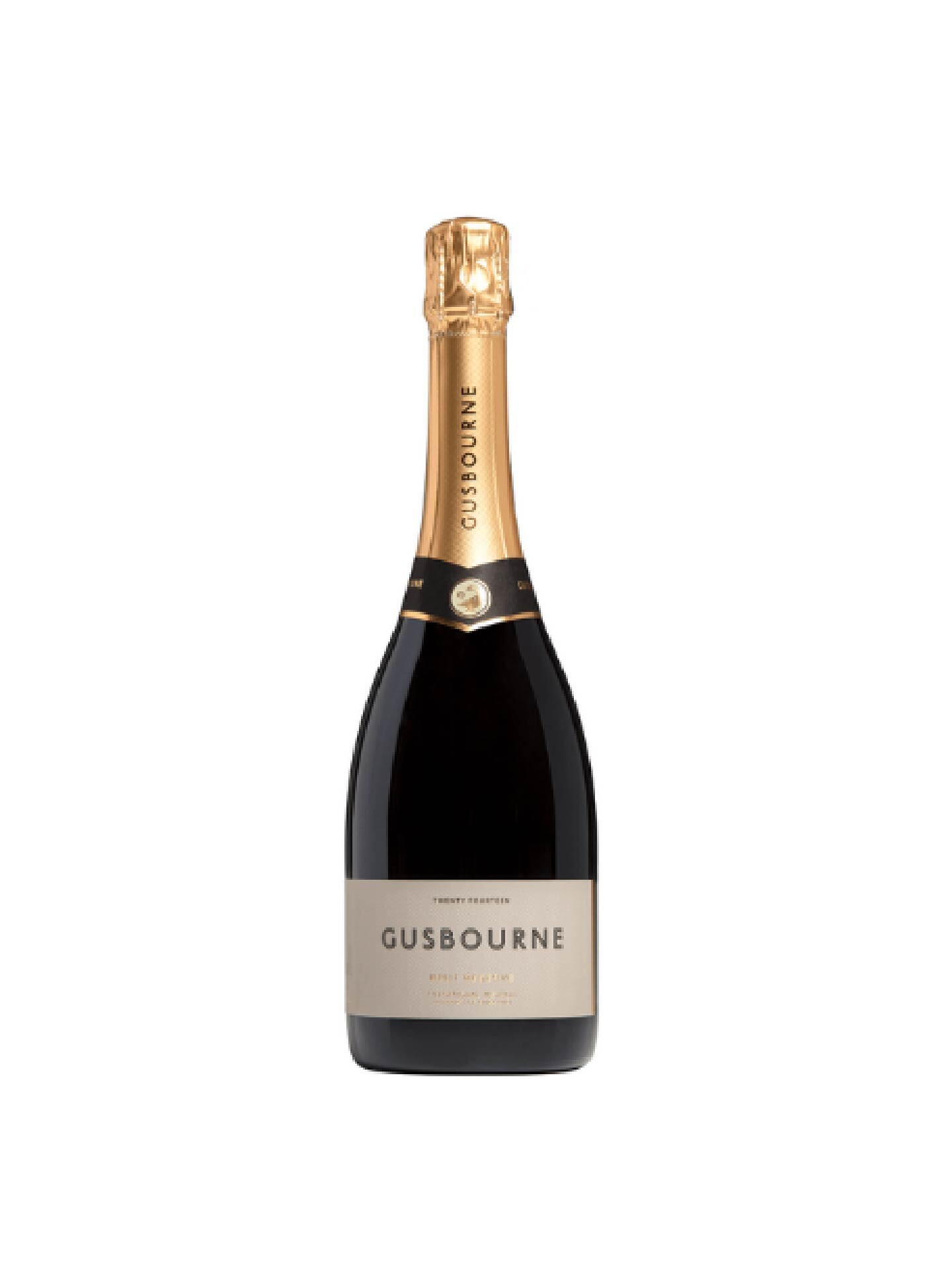
Gusbourne Blanc de Blancs 2016
(Kent, England)
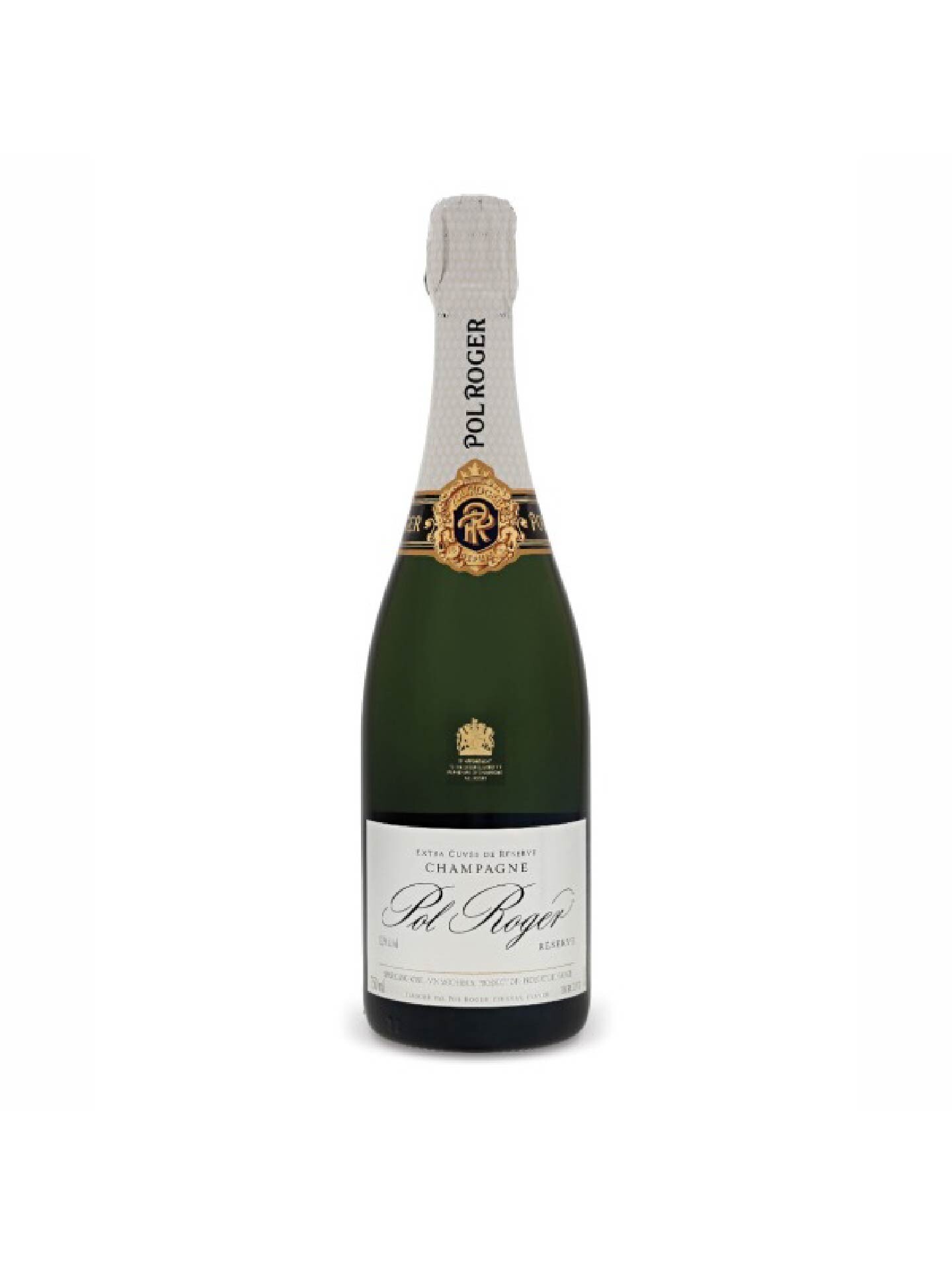
Pol Roger Brut Réserve NV
(Épernay, Champagne)
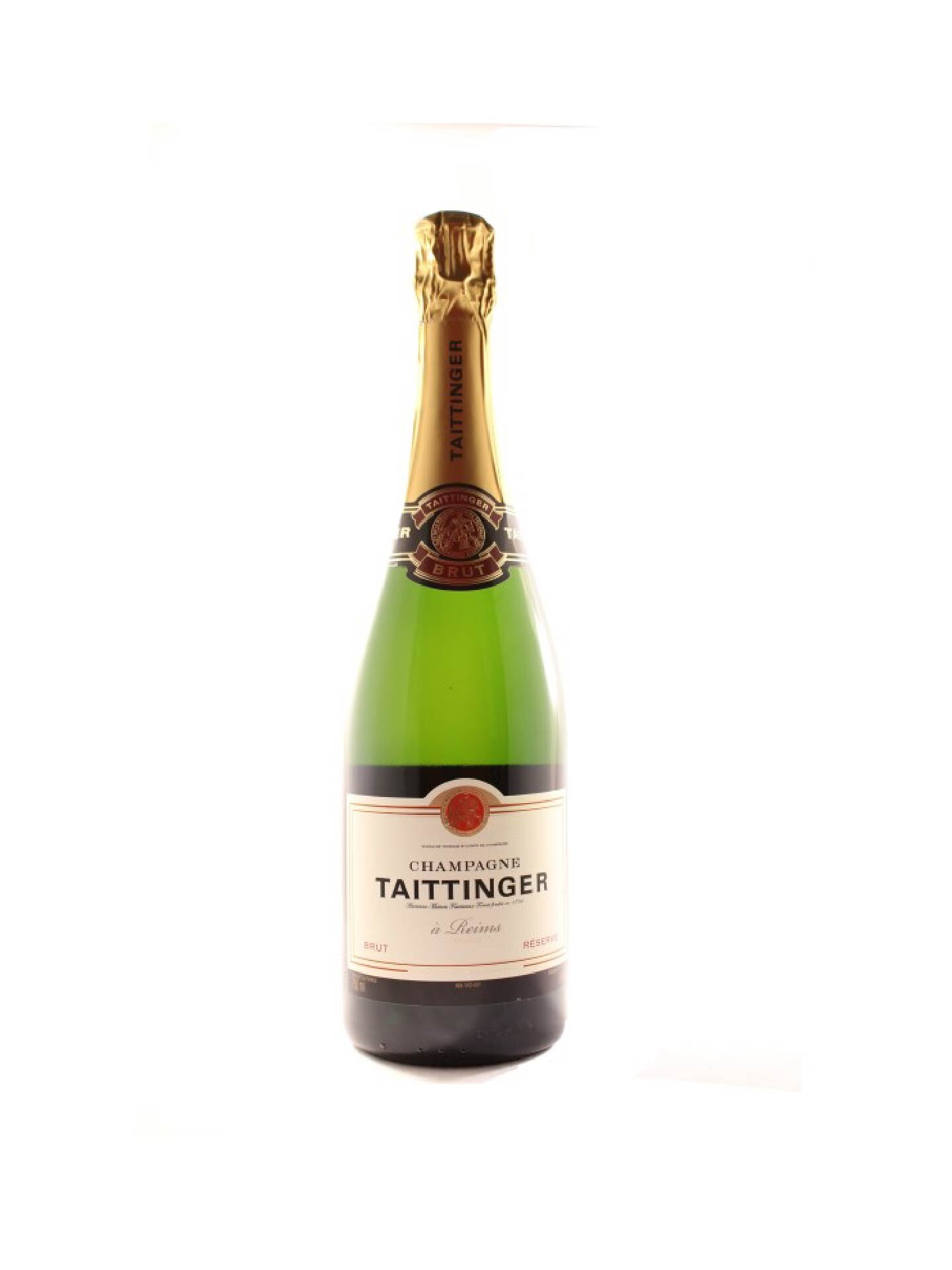
Taittinger Brut Réserve NV
(Reims, Champagne)
First Sip: Acidity
English sparkling wines have this vibrant, sharp acidity that feels like they’ve captured the very essence of a cool, crisp English morning. With Nyetimber’s Classic Cuvée, you get that straightaway—zesty citrus with a backbone of green apple. It’s punchy but not in an aggressive way, more like it’s keeping your palate on its toes.
Then you’ve got Gusbourne’s Blanc de Blancs, which dials the acidity up a notch. Made from 100% Chardonnay, it’s lean and precise, with a zing that cuts through with serious intent. That electric sharpness makes you want to go back for another sip immediately—almost like the wine is waking you up with each mouthful.
Now, flip to the French side, and things are more restrained. Pol Roger has a more laid-back acidity, not as sharp as the English duo. It’s fresh, sure, but there’s a softness there, rounding things out, giving the wine a more elegant flow across the palate. It’s almost like Pol Roger is offering you a cushion to land on, whereas Nyetimber and Gusbourne are more about keeping you alert.
Taittinger has a similarly mellow approach—bright, but nothing that’s going to jolt you. It’s a perfect example of Champagne’s ability to balance acidity without losing freshness.
Minerality: That English Earthy Edge
Here’s where English sparkling wines are making a name for themselves: minerality. The soils in southern England, especially the chalky terroir, give wines like Nyetimber and Gusbourne a distinct, almost stony quality. With Nyetimber, there’s this underlying salinity that makes you think of sea breeze and wet stones. That minerality runs throughout the wine, adding depth without overpowering the fruit.
Gusbourne, while still mineral-driven, is more subtle in that department—flinty, yes, but more focused on the fresh, pure fruit flavours. It’s a bit more delicate, like a summer breeze over the Kent countryside.
Pol Roger’s minerality is more refined—like a quiet echo rather than a strong statement. It’s there, but it’s softer, more integrated into the whole experience. Taittinger, on the other hand, leans more towards richness and creaminess, with less emphasis on minerality altogether. You’re getting more floral and ripe fruit notes here, and the minerality takes a backseat.
Flavour Depth: The Layered Experience
Nyetimber’s Classic Cuvée is wonderfully layered. The first thing that hits you is the fruit—citrus and pear—but as it sits in the glass (and as you sip), there’s a shift towards richer notes. You start picking up honey, hazelnut, and that classic brioche touch from the lees aging. It’s a wine that evolves in the glass, which is always a good sign, especially if you’re sitting with it for a while.
Gusbourne is more focused, sticking to citrus and green apple with a slight hint of freshly baked bread. While it doesn’t have quite the complexity of Nyetimber, it’s incredibly pure. It knows exactly what it is—sharp, clean, and beautifully expressive.
Over in Champagne, Pol Roger is pure indulgence. The flavours are broader, richer—think toasted almonds, vanilla, and brioche. There’s a lot going on, but it’s all tied together beautifully. That’s the magic of Champagne’s longer aging; it brings out all those luxurious secondary flavours that just scream elegance.
Taittinger is softer, more about white flowers, stone fruits, and a touch of lemon curd. It doesn’t push as many flavour boundaries as Pol Roger but maintains that same silky smoothness. If you’re after something gentle and easy-drinking, Taittinger’s your go-to.
The Final Pour
You know, this comparison wasn’t really about finding a “winner”—it’s more about realising how much English sparkling wines have carved their own identity. Nyetimber and Gusbourne are unapologetically fresh, vibrant, and minerally, making them fantastic food-pairing wines. The sharper acidity makes them versatile and a joy to drink with seafood, cheese, or even something as simple as salted nuts.
On the other hand, if you’re after that luxurious texture and a more decadent flavour profile, Champagne will always deliver. Pol Roger, with its depth and richness, is perfect for celebrating (or just treating yourself). Taittinger offers something a bit softer, more floral—ideal for those who want elegance without the intensity.
So, the next time you’re staring at a shelf trying to decide between an English sparkler and a classic French Champagne, think about what kind of experience you’re after. If it’s bright, zesty, and full of energy, English wines are absolutely worth exploring. If you want something a bit more polished and indulgent, Champagne will always be there, ready to deliver.
Grand Siècle Unveiled: Exploring the Timeless Elegance of Laurent-Perrier’s Masterpiece
The Laurent-Perrier Grand Siècle is a champagne that’s all about blending the best vintages, and it does it with a flair that speaks to the heritage and craft behind it. It’s a pretty special bottle, the kind of champagne that is all about precision and consistency, yet always brings something fresh with each release.
Laurent-Perrier is a house with a lot of history, founded in 1812, but it’s Grand Siècle, introduced in 1959, that really took them into a different league. The idea behind it was to create the perfect expression of champagne by blending three exceptional vintages rather than sticking to just one year’s harvest. They don’t use any lesser grapes, though. It’s all Grand Cru vineyards, which are considered the best, and from only Chardonnay and Pinot Noir, which is traditional for some of the finest champagnes.
When you pop open a bottle of Grand Siècle, you’re not just getting one champagne but a blend that aims to mimic a “perfect year.” It’s like an orchestra of different elements all coming together to create harmony. The team at Laurent-Perrier selects three complementary years, all from vintages that are considered exceptional. They age them for a minimum of eight years, but often longer, which adds a lot of depth and complexity to the champagne. This multi-vintage approach is relatively rare in the world of champagne, where most prestige cuvées are single-vintage.
The bottle itself makes a statement before you even get to the contents. It’s inspired by the grandeur of the 17th century, when Louis XIV, also known as the Sun King, reigned in France. That’s where the name Grand Siècle comes from—the “Great Century.” It was a period of opulence and artistic flourishing, which Laurent-Perrier aims to mirror in its champagne.
What’s inside the bottle lives up to the packaging. On the nose, it’s a blend of toasted brioche, almond, and subtle hints of citrus. The palate is rich but not overwhelming, with notes of honey, candied fruits, and a nice minerality that keeps everything balanced. The finish is long, leaving behind a sense of freshness that makes you want to go back for more. It’s not a champagne you rush through but something you take your time with, appreciating each layer as it reveals itself.
One of the key things that makes Grand Siècle stand out is its consistency. Champagne can be tricky—there are a lot of variables from year to year, and not every vintage is going to be great. But with Grand Siècle, they’ve cracked the code on how to make something exceptional, no matter the individual conditions of a particular year. By blending the best of the best from three different harvests, they smooth out any inconsistencies, so you’re always getting something that’s top-notch.
That said, each iteration of Grand Siècle still has its own personality. The cellar master will adjust the blend slightly depending on the vintages used. So, while you can always expect elegance and balance, one release might lean more into the citrus notes, while another might emphasise the richer, toasted flavours. It’s like listening to different recordings of the same symphony—each one brings out new nuances.
It’s worth mentioning the food pairing potential with Grand Siècle as well. This isn’t just something to sip on its own, though it’s certainly good enough for that. It pairs beautifully with dishes like lobster, white truffle, or even a well-aged cheese. It’s a versatile champagne that can stand up to rich, decadent foods without being overshadowed.
Laurent-Perrier’s commitment to this multi-vintage philosophy has paid off. Grand Siècle has earned a reputation as one of the finest champagnes on the market, competing with heavy hitters like Dom Pérignon and Krug. But what sets it apart is that unique blend of vintages. They’ve mastered the art of creating a champagne that’s greater than the sum of its parts.
If you ever get a chance to visit Laurent-Perrier’s headquarters in Tours-sur-Marne, you’ll see that the care they put into their vineyards and their cellars mirrors the attention to detail that goes into every bottle of Grand Siècle. It’s a champagne that represents the house’s philosophy perfectly: tradition meets innovation, and the result is something that feels timeless.
So, if you’re thinking about splashing out on a bottle for a special occasion, Grand Siècle is the kind of champagne that’s going to elevate the experience. It’s not just about having a glass of bubbly—it’s about drinking something that’s been crafted with an incredible amount of skill, knowledge, and a touch of artistic flair.
Supermarket Wine Picks: Must-Try Bottles for Your Next Shop
If you're looking for quality wines that won’t break the bank, supermarket shelves have some real hidden gems. I’ve put together a selection of standout bottles that offer great value, flavour, and variety, all easily accessible. From refreshing English Bacchus and vibrant sparkling options to unique blends like a Rosorange, these wines are perfect for casual drinking, dinner pairings, or simply trying something a little different. Here are a few bottles you should consider grabbing on your next shop, whether you're after something light and fresh or a bit more adventurous.
Sancerre - Aldi - £11.99

This Sancerre Rosé from Chassaux et Fils offers a light, refreshing option for those who enjoy a crisp and delicate wine. Sancerre is well-known for its white wines, but the rosé can be just as exciting, particularly for fans of a subtle fruit profile.
On the nose, expect aromas of fresh red berries like strawberries and raspberries, with a hint of floral notes, possibly rose petals. There's likely a refreshing acidity on the palate, balanced by a touch of minerality typical of the Loire Valley terroir, where Sancerre is located. The rosé has a lighter body, making it an easy-drinking choice, with a lingering spicy finish to add complexity.
This wine pairs beautifully with light summer dishes such as salads, seafood, or grilled chicken. It would also be an excellent match for a charcuterie board, highlighting the fresh berry notes. Perfect for a warm afternoon or a casual evening get-together.
If you're looking for a wine that's not overly bold, but still delivers on elegance and finesse, this Sancerre Rosé would be a great pick. It brings a gentle fruitiness without being overly sweet, making it versatile for various occasions.
Bacchus - Aldi - £10.99
This Bowler & Brolly English Bacchus is a fresh, zesty white wine that highlights the best of English winemaking. Bacchus, often likened to Sauvignon Blanc, offers a crisp and aromatic profile, making it a perfect choice for those who enjoy lively, fruit-forward wines with a bright character.
On the nose, you’ll likely detect aromas of elderflower, freshly cut grass, and citrus zest, which give a lovely summery vibe to the wine. The palate should bring a burst of green apple, lime, and hints of gooseberry, balanced by a refreshing acidity. There’s a slight herbaceous quality too, which rounds out the wine nicely without overpowering the fruit.
This Bacchus would be a perfect partner for light dishes such as grilled fish, shellfish, or even a goat’s cheese salad. The citrus and herbaceous notes also make it a good match for Asian dishes with a bit of spice or zing, like Thai salads or sushi.
If you're after a vibrant and uplifting white with a bit more complexity than your usual bottle, this English Bacchus from Bowler & Brolly is a great pick. It embodies the increasing reputation of English wines, showcasing a distinctive style that reflects the country's cool climate and skilled winemakers.
Rosorange - Aldi - £9.99
This unique "Rosorange" wine offers an intriguing blend of rosé and orange wine, making it an exciting introduction for those wanting to explore something a bit out of the ordinary. With this style, you get the best of both worlds: the freshness and fruitiness of a rosé combined with the depth and complexity of an orange wine.
On the nose, expect vibrant notes of citrus—particularly orange peel—combined with red fruit aromas like strawberry or raspberry. There’s also likely a floral element, perhaps with hints of honeysuckle or orange blossom. When you take a sip, the wine will reveal a smooth, fruit-driven palate with a pleasant texture from the orange wine component, which undergoes extended skin contact during fermentation. This lends the wine a slightly tannic structure and a richer body than your typical rosé.
It’s perfect for those who love something fruity but not overly sweet, as this blend likely maintains a dry finish with a bit of spice or earthy undertones. This Rosorange would pair wonderfully with summer barbecues, roasted vegetables, or even a Mediterranean-inspired spread. It’s also versatile enough to enjoy on its own, as its unique character makes it a conversation starter.
For anyone looking to step outside the usual wine selections and try something fun and different, this Rosorange is an ideal pick. It’s approachable for those new to orange wines, while still offering enough complexity to satisfy more seasoned drinkers.
Bramble Hill Rose - M&S
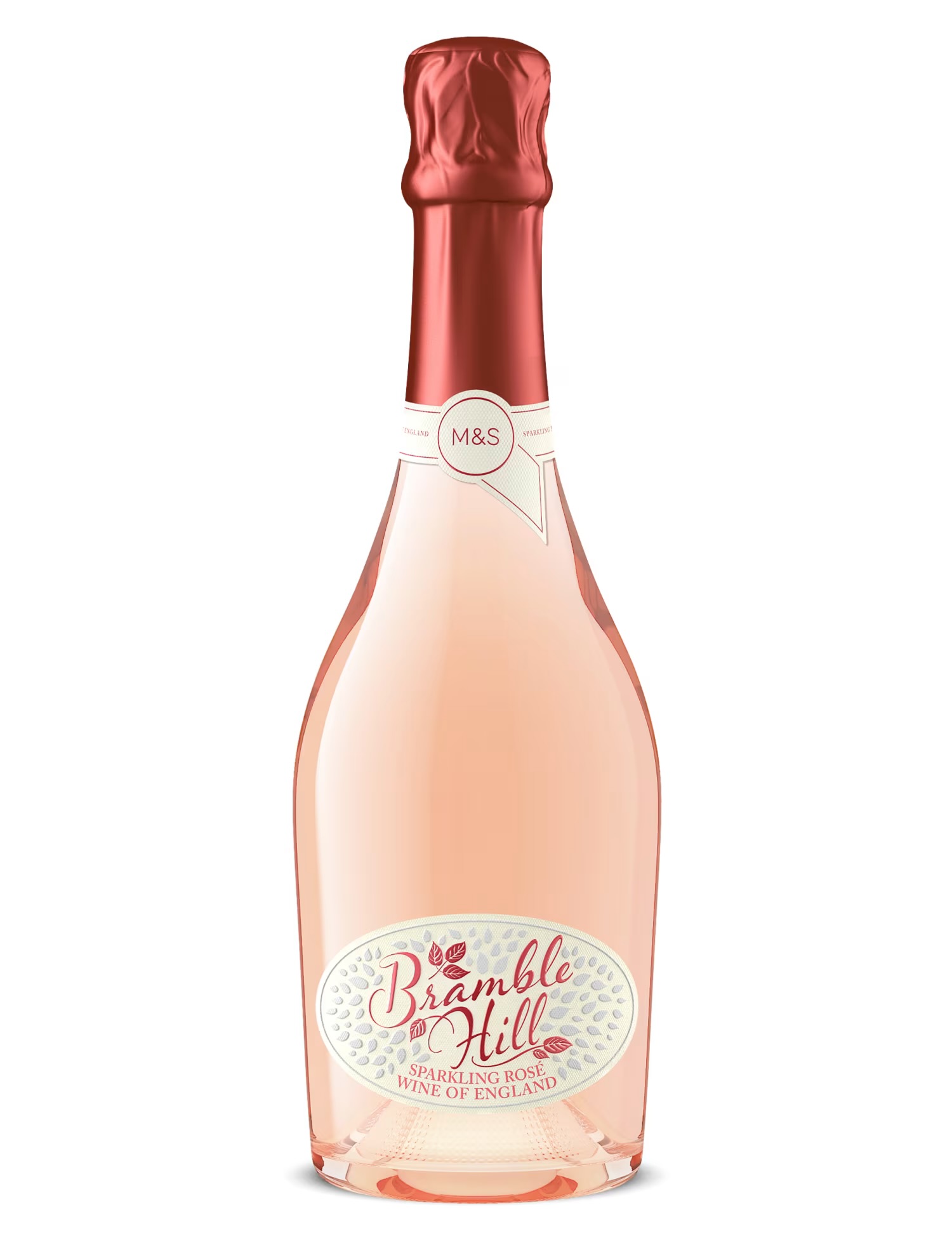 The Bramble Hill Sparkling Wine from M&S is a bright, easy-drinking English bubbly made in Kent. It uses the Charmat method, similar to Prosecco, which gives it a lively fizz and a fresh profile. Expect crisp apple and citrus notes, making it a great option for relaxed occasions or as an aperitif. While it may not have the depth of traditional method sparklers, it delivers excellent value for its price. Ideal with light dishes like chicken, salads, or a cheese board, it's perfect for everyday celebrations.
The Bramble Hill Sparkling Wine from M&S is a bright, easy-drinking English bubbly made in Kent. It uses the Charmat method, similar to Prosecco, which gives it a lively fizz and a fresh profile. Expect crisp apple and citrus notes, making it a great option for relaxed occasions or as an aperitif. While it may not have the depth of traditional method sparklers, it delivers excellent value for its price. Ideal with light dishes like chicken, salads, or a cheese board, it's perfect for everyday celebrations.
Experience the Wurstmarktplatz
The Wurstmarktplatz Wine Festival is one of Germany’s oldest and most beloved wine festivals, taking place in Bad Dürkheim, a small town in the heart of the Palatinate wine region. Every September, this quaint town transforms into a bustling celebration of local wines, tradition, and community spirit. What makes it stand out from other wine events is its deep-rooted history—dating back over 600 years—and the vibrant atmosphere that mixes wine culture with the excitement of a funfair.
You’ll find hundreds of wines from local vineyards on offer, mainly featuring Riesling, which is a signature grape of the region. There's a friendly rivalry between winemakers as they showcase their best selections, and festival-goers can hop from stall to stall sampling different varieties. Whether you're a casual drinker or a wine enthusiast, there’s something special about sipping a crisp glass of Riesling while surrounded by the scenic backdrop of vineyards and old-world charm.
It’s not just about wine though. As its name suggests, "Wurstmarkt" also pays homage to the local food culture, particularly sausages. You can expect to indulge in hearty German fare like bratwursts, pretzels, and cheeses, all of which pair perfectly with the wines on offer. Beyond the food and drink, the festival atmosphere is infectious, with live music, traditional folk dances, and even a fairground full of rides for both children and adults.
What really sets the Wurstmarktplatz Wine Festival apart is the community feel. This is where locals and tourists mingle, and the warmth and hospitality of the people is undeniable. Families come year after year, keeping the tradition alive, and newcomers are welcomed with open arms. It’s the kind of event where you can strike up a conversation with anyone over a shared bottle of wine, creating memories that linger long after the festival ends.
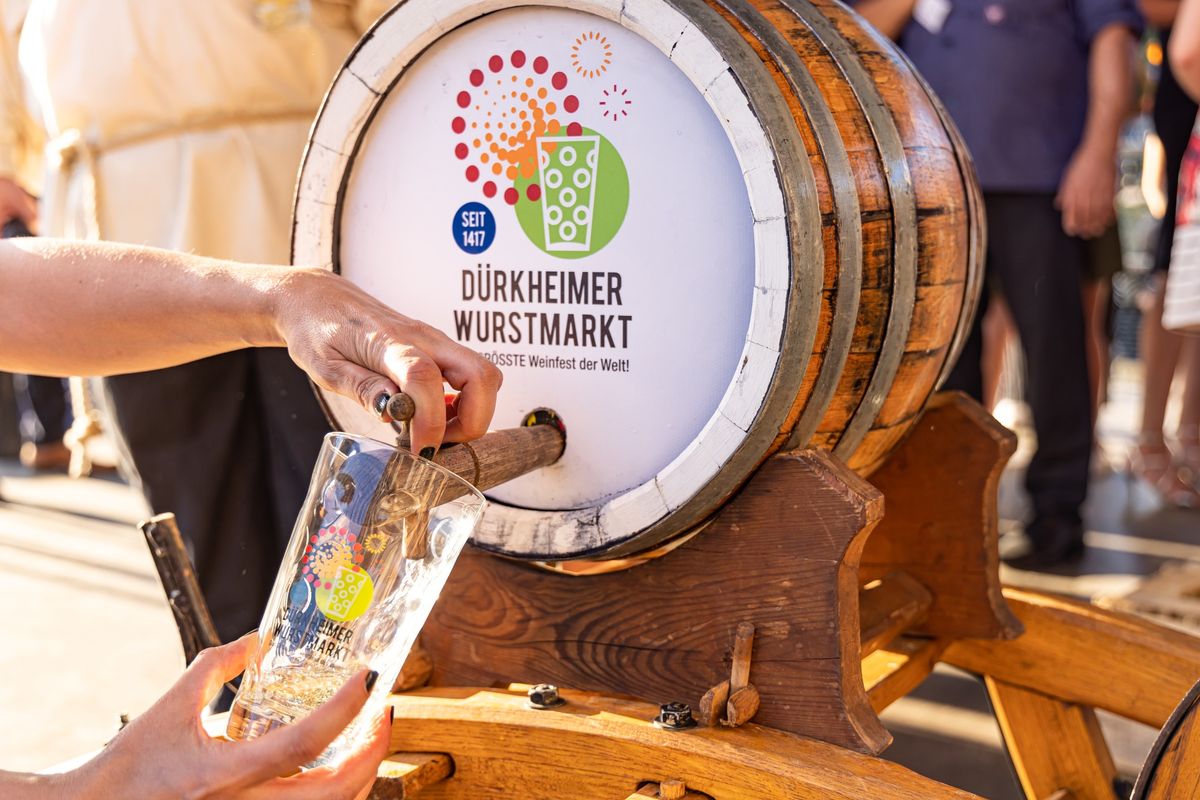
The festival’s location is another big draw. Bad Dürkheim is nestled in one of Germany’s most picturesque wine regions, and many use the opportunity to explore the surrounding vineyards and countryside. The combination of history, wine, and festivity makes the Wurstmarktplatz Wine Festival a must-visit for anyone keen on experiencing authentic German culture. Whether you go for the wine, the food, or simply to soak in the lively atmosphere, it’s an experience that captures the heart of the Palatinate region.
One of the most unique aspects of the Wurstmarktplatz Wine Festival is the way the wine is served. Instead of the typical small tasting glasses, here the wine comes in sturdy half-litre glasses, known as "Dubbegläser." These generously sized glasses are part of the festival’s charm and reflect the laid-back, generous spirit of the Palatinate region. Despite the large pours, prices remain incredibly reasonable, with a glass typically costing around 5 euros. It’s this combination of quality wine, generous servings, and affordability that keeps visitors coming back year after year.
Size Matters: Know your bottles!
When it comes to wine and champagne, size can matter more than you’d think. Sure, we’re all used to the standard 750ml bottle, but venture into the realm of larger bottles and things get a bit more exciting. These oversized bottles have deep roots in winemaking tradition, and their names are often drawn from ancient kings or biblical figures—adding a sense of grandeur to any occasion.
The standard bottle is your everyday choice, but move up to a Magnum (1.5 litres), and you’re starting to make an impression. For starters, it’s not just about more wine. Magnums are often praised for how well they age wine or champagne. Why? The ratio of oxygen to wine is lower than in a standard bottle, which means the aging process is slower and smoother. For wine lovers, that’s important. But for the rest of us, a magnum just looks and feels a bit more luxurious. They’re great for special dinners or when you want to say, “Yes, this is a bit of a big deal.”
Step up to the Jeroboam (3 litres), and now you’re talking serious celebration territory. This size is often associated with major events or holidays. Named after an ancient king of Israel, the Jeroboam was first used in Bordeaux, but today, you’re more likely to see it at weddings, parties, or even music videos. In fact, Jeroboams and bigger bottles have become symbols of extravagance. Whether it’s a champagne Jeroboam being passed around at a celebrity bash or something seen on screen during New Year’s Eve parties in big movies, these bottles are made to be noticed.
But 3 litres isn’t where it stops. The Methuselah (6 litres) is named after the biblical figure said to have lived 969 years, and this bottle is built for endurance too. These giant bottles are highly prized for aging fine wine and champagne. In fact, many wine collectors will tell you that larger bottles provide the perfect environment for wine to age slowly and develop complex flavours. It’s the kind of bottle that would stay tucked away in a serious cellar for decades, only to be opened for a monumental celebration.
In the modern world, though, Methuselah's are not just the preserve of collectors. You’ll see these bottles brought out at lavish weddings, high-end parties, and charity auctions where the cork-popping becomes part of the show. It’s not just about the wine—it’s the spectacle of opening something so enormous.
Then you’ve got the Salmanazar (9 litres), which is essentially the party starter in the world of champagne. This bottle holds the equivalent of 12 standard bottles, and it’s named after a king of Assyria, which adds an extra bit of mystique. A Salmanazar bottle is the kind of thing you might see at a luxury New Year’s Eve celebration, or on stage at a music festival when a DJ is spraying champagne over the crowd. It’s not just about drinking it—it’s about making a statement.
This kind of thing has become huge in pop culture. From celebrity parties to Formula 1 podium celebrations, massive champagne bottles are everywhere. Whether it’s athletes popping oversized bottles after a big win, or rappers flaunting them in their music videos, these bottles scream extravagance. In fact, large-format champagne bottles have almost become a status symbol in certain circles. It’s a bit like saying, “I’m not just celebrating, I’m going all in.”
Going even bigger, you’ve got the Balthazar (12 litres) and the Nebuchadnezzar (15 litres), both named after figures from the Bible or ancient history. These bottles are a spectacle in themselves. If you’re bringing one of these out, it’s not just about the wine—it’s about putting on a show. These are the kinds of bottles you see at ultra-exclusive parties, or maybe at an auction where a collector is trying to outdo everyone else. It’s rare to even see one of these bottles in the wild, but when you do, you know something big is going down.
Beyond the big parties and social media moments, there’s also a growing appreciation for these large bottles among serious wine enthusiasts. They understand that bigger bottles aren’t just fun to look at—there’s a practical side to them too. The slower aging process can result in better wine. Collectors love to buy Methuselah's or Salmanazars for long-term aging because they know that 20 or 30 years from now, the wine inside will likely be extraordinary.
But even if you’re not a collector, it’s hard to deny the allure of these massive bottles when they show up in modern culture. Think about music videos, where magnums or Jeroboams of champagne are a visual cue for luxury and celebration. Or even high-end nightclubs, where these bottles are paraded around by staff with sparklers attached to them. It’s almost ritualistic—when the big bottle comes out, you know the party’s hit its peak.
In a way, the use of these bottles has shifted. While they still serve their original purpose of aging wine to perfection, today they’ve also become icons of celebration and excess. Whether they’re being popped at a red carpet event, flaunted in pop culture, or stored in a collector’s cellar, these oversized bottles continue to hold a place in both tradition and modern luxury.
The Problem of Wine Fraud and Counterfeiting
Wine fraud has been a persistent issue in the industry, particularly for expensive and rare wines. Counterfeit bottles are estimated to make up a significant percentage of the global wine market, costing producers and collectors millions each year. These fraudulent practices range from simple relabeling of cheap wines to mimic more expensive brands, to more sophisticated operations involving the production of fake bottles and labels.
For wine collectors, investors, and enthusiasts, the authenticity of a bottle is paramount. Not only does wine fraud undermine consumer confidence, but it also affects the reputation and revenue of genuine producers. This is where blockchain technology comes into play, offering a solution to ensure the traceability and authenticity of wines from vineyard to glass.
How Blockchain Works in the Wine Market
Blockchain is a decentralised, digital ledger that records transactions across multiple computers in a way that makes the records difficult to alter retroactively. This technology can provide a transparent and immutable record of a wine’s journey from the vineyard, through production and distribution, to the end consumer. Here's how blockchain can be applied to the wine market:
- Tracking and Traceability: Each bottle of wine can be tagged with a unique identifier, such as a QR code or an RFID chip, that is recorded on the blockchain. This identifier tracks every stage of the wine’s production and distribution, providing a transparent history. Consumers can scan this code to access detailed information about the wine’s origin, grape variety, production process, and journey to the shelf. This level of traceability helps prevent fraudulent practices by making it easier to verify a wine’s provenance.
- Supply Chain Transparency: Blockchain allows every participant in the wine supply chain, from vineyard owners and winemakers to distributors and retailers, to input data into a shared ledger. This ledger is accessible to all participants and provides a clear, tamper-proof record of every transaction. If a bottle is recalled, for example, its entire journey can be traced back through the blockchain, pinpointing where issues occurred and ensuring accountability.
- Authenticity Verification: For rare and high-value wines, blockchain can be particularly valuable. Producers can record the bottling, packaging, and storage conditions on the blockchain, and certificates of authenticity can be digitally attached to each bottle’s record. This means collectors and investors can easily verify the authenticity of a bottle before purchase, reducing the risk of buying counterfeit wine.
- Consumer Engagement and Education: Blockchain can also enhance consumer engagement by providing more transparency about the wine they are buying. By scanning a bottle’s QR code, consumers can access a wealth of information about the wine, including tasting notes, food pairing suggestions, and even videos from the winemaker. This added transparency can boost consumer trust and loyalty, particularly among younger, tech-savvy wine drinkers who value authenticity and ethical production practices.
Blockchain in Action
Several companies and vineyards are already leveraging blockchain to enhance transparency and combat fraud:
- Château Margaux: This renowned Bordeaux producer has started using blockchain to guarantee the authenticity of its wines. By scanning a unique code on each bottle, buyers can verify its history and ensure they are purchasing a genuine product. Ensuring the authenticity of a wine bottle has become crucial in today's market, especially with the prevalence of counterfeit wines. A great example of this is how renowned producers like Château Margaux are leveraging technology to guarantee the authenticity of their wines. By visiting their bottle authentication page, you can easily verify the legitimacy of a Château Margaux bottle. This tool, backed by innovative technologies like blockchain, allows consumers to confirm the wine’s origin, ensuring they receive a genuine product directly from the vineyard.
- Arianee and Wine Vault: Arianee, a blockchain technology company, has partnered with Wine Vault to provide digital passports for wines. These passports are stored on the blockchain and provide a record of the wine’s provenance, production details, and ownership history. This technology has been particularly useful for rare and expensive wines, providing an extra layer of security and assurance for buyers.
- Everledger: A blockchain company that has worked with several wine producers to create a digital provenance record for high-value wines. Everledger’s system uses RFID tags to track each bottle’s journey and records every transaction on the blockchain, making it easy for buyers to verify authenticity.
Benefits Beyond Authenticity
While the primary driver for using blockchain in the wine industry is to combat fraud, there are several additional benefits:
- Enhanced Supply Chain Efficiency: With a single, unified ledger, all parties in the wine supply chain can coordinate more effectively, reducing paperwork and manual processes, which can lower costs and improve efficiency.
- Improved Inventory Management: Blockchain can provide real-time updates on stock levels and product locations, helping wineries and distributors manage their inventory more efficiently and reduce waste.
- Sustainability and Ethical Sourcing: Blockchain can also be used to track the sustainability credentials of a wine, recording information on organic farming practices, carbon footprint, and fair labour conditions. This data can be valuable for consumers who prioritise sustainability and ethical sourcing in their purchasing decisions.
While blockchain offers numerous advantages, there are challenges to its widespread adoption in the wine industry:
- Cost and Complexity: Implementing a blockchain system requires a significant investment in technology and training. For smaller wineries, the cost and complexity of adopting blockchain may be a barrier.
- Integration with Existing Systems: Many wineries and distributors already use various systems for inventory management and supply chain tracking. Integrating these with a new blockchain platform can be challenging.
- Regulatory Hurdles: The wine industry is heavily regulated, and there may be legal and compliance issues to consider when adopting blockchain technology, particularly for international transactions.
The Future of Blockchain in Wine
As the wine industry continues to face challenges with authenticity and transparency, the adoption of blockchain technology is likely to grow. As more producers and distributors recognise the benefits of a tamper-proof, transparent ledger, blockchain could become a standard tool for ensuring the authenticity and traceability of wine.
Moreover, as consumers become more interested in the origins and ethics of their purchases, the demand for transparent and verifiable information will increase. Blockchain technology not only meets this demand but also offers a competitive edge to wineries that adopt it early.
In the future, we may see blockchain integrated with other emerging technologies, such as AI and IoT, to create even more sophisticated systems for managing the wine supply chain. For now, blockchain offers a promising solution to some of the wine industry’s most pressing challenges, paving the way for a more transparent, trustworthy market.
2025 - A look into the future of vino
Emerging Regions Gaining Traction
Wine enthusiasts are increasingly curious about places beyond the usual heavyweights like France or Italy. Spots like Georgia, Slovenia, Hungary, and even parts of China are catching the eye. These regions bring a fresh twist with unique tastes and winemaking styles. Georgia, for instance, is getting a lot of buzz for its ancient methods using qvevri (large clay vessels). Meanwhile, China's Ningxia region is starting to make waves, investing heavily in its vineyards and producing some surprisingly good wines.
Unusual Grape Varieties Making a Comeback
There's also a move towards wines made from lesser-known grape varieties. Take Saperavi from Georgia – it's a deep, tannic red that offers a bold alternative to more common grapes. In Greece, Xinomavro is being compared to Italy’s Nebbiolo for its structure and aging potential. Even Spain’s Mencia, once overlooked, is now being sought after for its bright, fresh flavours.
Influence of Social Media and Young Consumers
Much of this trend is driven by younger drinkers and social media. Millennials and Gen Z aren’t stuck on the old favourites. They’re looking for wines that stand out, and they’re turning to platforms like Instagram and TikTok, where influencers are showcasing wines from unexpected places. This generation values new experiences over sticking with familiar labels, making them open to trying wines from these lesser-known regions.
The Appeal of a Good Story
Wine isn’t just about taste – it’s also about the story behind it. Wines from emerging regions often come with a rich backstory or unique production method that makes them more appealing. Think about Slovenian orange wines, which use extended skin contact, or Georgian wines made using ancient clay vessels. These details add a layer of depth to the wine-drinking experience, making the bottle feel special and worth exploring.
Sommelier and Restaurant Influence
Restaurants and wine bars are also playing a part. Sommeliers are keen to introduce customers to wines they might not find elsewhere, adding an element of discovery to their wine lists. This is pushing wines from these lesser-known regions into the limelight, especially in more adventurous dining spots.
Wine Competitions and E-Commerce Boost
Winning awards in international competitions can also boost the profile of these wines, making them more desirable. Plus, with the growth of online wine shopping, consumers have easier access to a broader range of wines. During the pandemic, people started experimenting more with what they were buying online, a habit that seems to be sticking around.
In short, the wine scene in 2025 is shaping up to be more diverse and adventurous. With consumers looking to explore and social media driving curiosity, wines from unexpected places are set to find their place on the world stage.
One Scottish Sangria Please, Sir! (ft. recipe)
When you think of a drink that stirs up strong opinions, Buckfast might not be the first that comes to mind—but it probably should be. Originating from Buckfast Abbey in Devon, England, this tonic wine has transcended its monastic roots to become a cultural phenomenon in parts of the UK and Ireland. It’s loved, loathed, debated, and even blamed for social problems. Yet, through all this, Buckfast—or “Buckie,” as it’s often called—has maintained a devoted following, cementing its status as a cultural icon.
A Brief History of Buckfast
Buckfast’s story begins in the 1890s when Benedictine monks at Buckfast Abbey began making this “medicinal” tonic wine. Back then, it was marketed as a health tonic, a remedy for whatever ailed you. The drink’s formula includes a unique blend of fortified wine and caffeine, which has evolved over the years into the product we know today: a sweet, syrupy drink with a whopping 15% alcohol content and about 281 mg of caffeine per bottle—more caffeine than you’ll find in several cans of cola combined!
This potent mix has led to its colourful reputation. In places like Scotland and Northern Ireland, it’s often seen as the unofficial drink of choice for certain youth subcultures. With its high alcohol content and caffeine kick, it’s not hard to see why it’s a favourite for those looking to get the party started—or keep it going.
The Controversy and Cult Following
Buckfast has developed a bit of a notorious reputation, especially in Scotland, where it has often been linked to anti-social behaviour. It’s been mentioned in police reports and crime statistics more often than any other alcoholic drink. The drink’s potent mix of alcohol and caffeine is believed by some to contribute to aggressive behaviour, earning it nicknames like “commotion lotion” and “wreck the hoose juice.” [in your best Scottish accent]
But the controversy hasn’t hurt its popularity. If anything, it’s added to its mystique. Buckfast has a loyal fan base who see it as more than just a drink—it’s a statement, a symbol of a certain kind of irreverent, rebellious spirit. In parts of Scotland and Northern Ireland, Buckfast is as much a cultural artefact as it is a beverage.
It’s even found its way into music, art, and comedy. From Scottish rap lyrics to TV shows like “Still Game,” Buckfast is often portrayed as a staple of working-class life, a shorthand for a good time that might get a little out of hand. There’s Buckfast merchandise, Buckfast memes, and even Buckfast-themed events. The drink has truly transcended its humble origins to become a pop culture icon.
Buckfast in Popular Culture and Media
What’s fascinating about Buckfast is how it’s been embraced in popular culture. It’s not just a drink; it’s a muse. Musicians, comedians, and artists have all found inspiration in Buckfast’s unique place in society. In music, it’s referenced by everyone from The Proclaimers to up-and-coming hip-hop artists in Glasgow. In comedy, it’s a running joke, a familiar punchline that resonates because of its notorious status.
In Northern Ireland, the drink is almost woven into the fabric of youth culture. It’s a drink that’s passed down through generations, often with a knowing smile and a story or two of wild nights out. Even as it’s blamed for bad behaviour, Buckfast continues to hold a certain charm, a reminder of late nights, laughs, and perhaps a few regrets.
The Monks and the Mystery
What makes the Buckfast story even more intriguing is the monks themselves. The Benedictine monks of Buckfast Abbey, who still produce the drink, have always maintained a low profile about its popularity. They’re not exactly out there promoting it as the drink of choice for a wild night out. On the contrary, they’ve tried to distance themselves from its more infamous associations, pointing to its original purpose as a tonic wine.
There’s a certain irony in this: a drink made by monks becoming the go-to for a party crowd. But maybe that’s part of the appeal. There’s a hint of the forbidden about Buckfast, a sense that you’re drinking something you maybe shouldn’t be, or at least, that you’re joining in on a long-standing, somewhat tongue-in-cheek cultural joke.
Recipe
The Scottish Sangria
Given Buckfast’s unique flavour profile—somewhere between a sweet red wine and a caffeinated energy drink—it’s not surprising that people have started to experiment with it in cocktails. One of the more popular concoctions is a twist on the classic sangria, swapping out traditional red wine for Buckfast and adding some uniquely Scottish ingredients.
Ingredients:
- 500ml Buckfast
- 250ml vodka
- 1 bottle of Irn-Bru WKD (or another orange-flavoured alcopop)
- 1 orange, sliced
- 1 lemon, sliced
- 1 lime, sliced
- A handful of fresh berries (strawberries, raspberries, or blueberries)
- Ice
Instructions:
- In a large jug or pitcher, combine the Buckfast and vodka.
- Add the slices of orange, lemon, and lime, along with the fresh berries.
- Pour in the Irn-Bru WKD and stir gently to combine.
- Fill the jug with ice and give it another gentle stir.
- Serve in glasses filled with ice and enjoy responsibly!
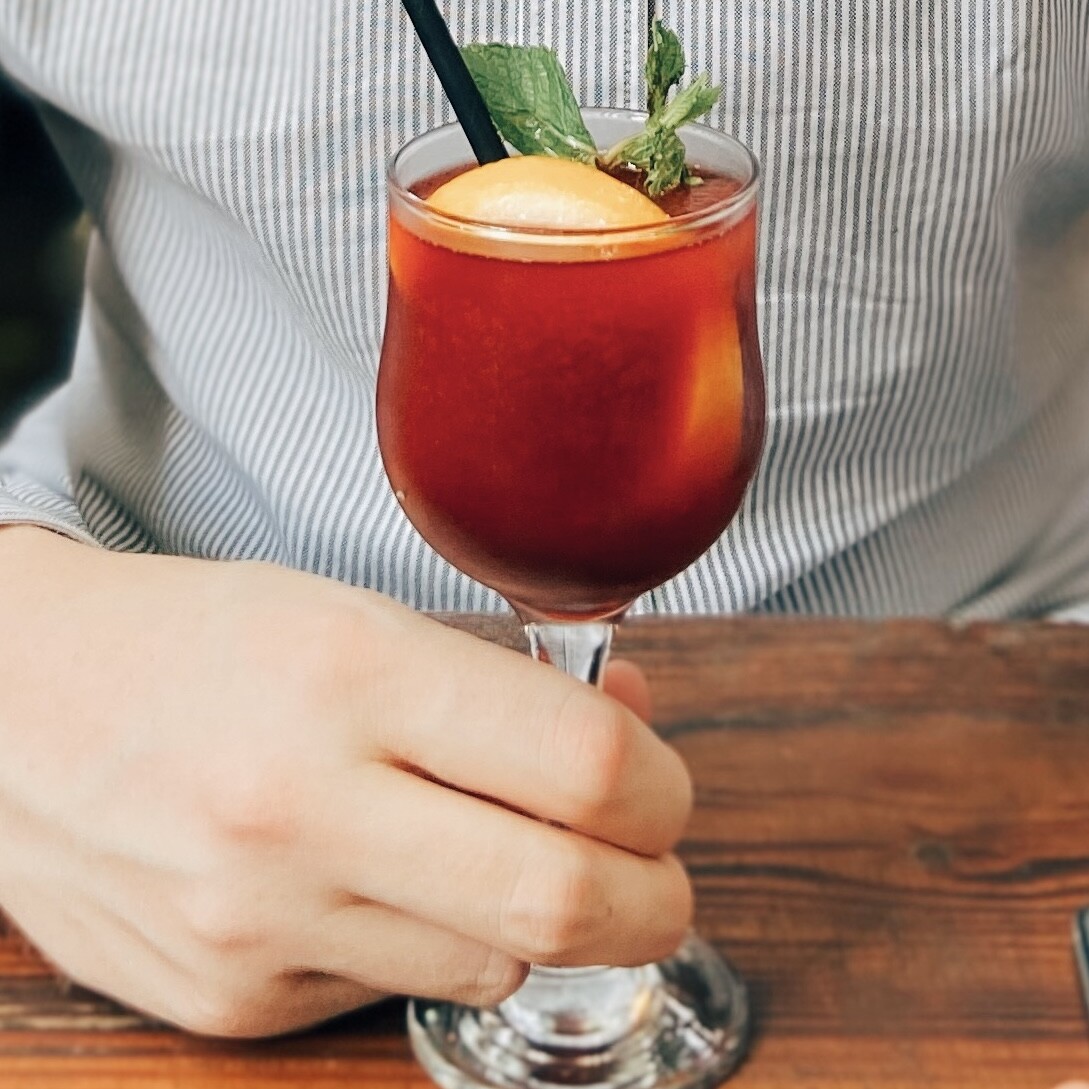
This Scottish Sangria is a playful take on a classic, with the caffeine kick of Buckfast and the unique flavour of Irn-Bru WKD adding a new dimension. It’s the perfect drink for a party with friends, a night in with some good music, or just whenever you feel like embracing a bit of the Buckfast mystique.
So, whether you love it, hate it, or are just curious to try it, Buckfast is a drink that’s undeniably left its mark. From its humble beginnings in a Devon monastery to its role as a cultural icon in Scotland and beyond, it’s a beverage that’s more than just a tonic wine—it’s a piece of history, a talking point, and, for many, a way of life. Cheers!
Blanc de Noir: A Unique Take on White Wine
Blanc de Noir, which translates from French as "white from black," is a fascinating and somewhat enigmatic category of wine. Unlike most white wines, which are made from green or yellow grapes, Blanc de Noir is produced using dark-skinned grapes, most commonly Pinot Noir and Pinot Meunier. While traditionally associated with sparkling wines, particularly in Champagne, this technique has recently found its way into the world of still white wines, creating a unique and intriguing style that’s capturing the attention of winemakers and wine lovers alike.
What is Blanc de Noir?
Blanc de Noir wines are made by gently pressing dark-skinned grapes and immediately separating the juice from the skins. Since the pigments that give red wines their color are found in the grape skins, this quick separation results in a wine that is light or golden in color, much like a traditional white wine. However, the brief contact with the skins can impart a slightly more complex and richer texture compared to typical white wines, making Blanc de Noir a unique offering.
The Grapes Behind Blanc de Noir
The two most commonly used grapes for Blanc de Noir are Pinot Noir and Pinot Meunier, both of which are staples in the Champagne region of France. Pinot Noir is revered for its ability to produce wines with delicate aromas and flavors, including red fruits, flowers, and earthy notes. Pinot Meunier, often considered a bit more robust and fruit-forward, adds body and complexity to the wine.
In the context of sparkling wines, these grapes contribute to some of the world’s most celebrated Champagnes. When used to produce still wines, they offer a rare opportunity to taste the essence of these grapes in a completely different form. The resulting Blanc de Noir wines tend to have a fuller body and more pronounced fruit character than many white wines, with a subtle richness that sets them apart.
The Flavour Profile of Blanc de Noir Wines
Blanc de Noir wines are known for their layered complexity. They often exhibit aromas of red berries, such as strawberry and raspberry, which are typical of the Pinot Noir grape. You might also find notes of citrus, white flowers, and a hint of minerality. On the palate, Blanc de Noir can be more textured and full-bodied than other white wines, with a creamy mouthfeel that makes it a delightful pairing with food.
The slight tannins from the grape skins, although minimal, can add a touch of structure to the wine, making it feel more substantial and satisfying. The acidity is usually vibrant, keeping the wine fresh and lively, which is why Blanc de Noir pairs so well with a variety of dishes, from seafood and poultry to richer fare like creamy pastas or even mild cheeses.
Where to Find Blanc de Noir Wines
Blanc de Noir wines are still relatively rare, especially in the still wine category. However, they are gaining popularity, and you can find them in both the Old World and New World wine regions. In France, particularly in Champagne, many producers create Blanc de Noir sparkling wines that highlight the character of Pinot Noir and Pinot Meunier. These wines are often labeled as such, so they are easy to identify.
In the New World, regions like California and Oregon are beginning to experiment with Blanc de Noir still wines, with some excellent results. These wines often take on a slightly different expression due to the warmer climates and different winemaking practices, but they retain the essential characteristics that make Blanc de Noir so intriguing.
Pairing Blanc de Noir with Food
Blanc de Noir wines are incredibly versatile when it comes to food pairings. Their acidity and subtle tannins make them a great match for a wide range of dishes. For sparkling Blanc de Noir, think about pairing it with oysters, sushi, or light salads. The bubbles and acidity can cut through the richness of seafood and enhance the freshness of the dish.
For still Blanc de Noir wines, consider pairing them with dishes that have a bit more substance. Roast chicken, grilled salmon, or even dishes with a creamy sauce can complement the wine’s fuller body and textured mouthfeel. The wine’s fruity notes can also play well with slightly spiced dishes, adding a layer of complexity to the pairing.
Why Blanc de Noir is Worth Trying
Blanc de Noir offers a unique wine experience that is both familiar and new. It takes the best qualities of dark-skinned grapes and presents them in a fresh, light form that surprises and delights the palate. Whether you’re a fan of Champagne or a curious wine lover looking to explore new styles, Blanc de Noir is a wine worth seeking out. Its growing popularity suggests that we may see more winemakers experimenting with this style in the future, offering even more opportunities to enjoy this distinctive and versatile wine.
Wine at 35,000 Feet: How Air Travel Affects Your Glass and What Airlines Are Doing About It
Flying at 35,000 feet does more to your senses than you might expect. The dry air, the hum of the engines, and the lower cabin pressure combine to mess with your taste buds in ways that can make your favourite wine taste like something entirely different. If you’ve ever sipped a glass of red in the air and thought, "This doesn’t taste like it did at home," you’re not imagining things. The science of taste at altitude is quite fascinating, and it has pushed airlines to get creative to ensure you can still enjoy a decent glass of wine while soaring above the clouds.
Why Wine Tastes Different in the Air
Let’s start with the basics. At cruising altitude, the cabin is pressurised to about the equivalent of 6,000 to 8,000 feet above sea level. This change in pressure, along with the dry air, reduces your ability to perceive flavours and aromas. Sweetness and saltiness take a hit, making food taste bland, while acidity and bitterness stand out more, which can throw a wine’s balance completely off.
When you’re on the ground, your sense of taste is a finely tuned instrument, picking up on the subtleties in a glass of wine—whether it’s the bright acidity of a Sauvignon Blanc or the complex tannins of a Cabernet Sauvignon. But in the air, those subtleties often disappear, leaving behind a wine that might taste flat, overly tannic, or just plain off.
What Airlines Are Doing About It
Airlines, especially those that pride themselves on their service, have long recognised this issue. Virgin Atlantic, for example, has taken a proactive approach by curating a wine list specifically for the sky. They’ve teamed up with wine experts to select bottles that not only taste great on the ground but also hold up well at altitude.
Virgin’s approach isn’t just about picking bolder wines. They conduct taste tests in conditions that mimic those at cruising altitude, which means they’re tasting these wines as you would in the air. This process helps them choose wines that maintain their flavour and character even when your senses are dulled.
One thing they’ve found is that wines with a more pronounced flavour profile tend to perform better in the air. For instance, reds with softer tannins like Merlot or Malbec, and whites with a bit more body like Chardonnay or Viognier, can still deliver a satisfying experience. Sparkling wines, with their lively bubbles and acidity, also tend to shine at altitude, cutting through the dryness of the cabin air.
Tailoring the Experience
Some airlines go even further by offering bespoke wine blends tailored for the in-flight experience. Virgin Atlantic has developed custom blends specifically for their flights, ensuring that what you’re drinking is designed to taste good up in the air. They even adjust their wine offerings based on flight routes, considering local preferences and the types of food being served. It’s all about making sure that the wine complements the entire in-flight experience.
But it’s not just about the wine itself. How it’s stored and served also makes a difference. Wines are typically kept at cooler temperatures on board to preserve their freshness and structure, and the cabin crew is trained to serve it at just the right temperature. Serving wine too warm can bring out the alcohol, while serving it too cold can mute the flavours even more than the altitude already does.
Audrey Hart, the Senior Manager for Inflight Services at Virgin Atlantic, emphasised the airline's dedication to enhancing the dining experience for passengers. She said, “We want to create culinary touchpoints that feed the heart and the soul; and this includes honouring moments like your first drink of champagne when you arrive in Upper Class, or a movie treat that’s served as you settle into an inflight film.” This highlights Virgin Atlantic's commitment to ensuring that even at 35,000 feet, passengers can enjoy a memorable and satisfying food and drink experience
How to Enjoy Wine in the Air
If you’re a wine lover, there are a few things you can do to enhance your in-flight wine experience. First, keep in mind that your sense of taste is compromised, so wines that you might not usually go for on the ground—like those with a fuller body or more pronounced fruit flavours—might be more enjoyable in the air. Sparkling wines are often a good choice, too, for their refreshing quality.
It’s also important to stay hydrated. The dry cabin air can dehydrate you quickly, which further dulls your senses. Drinking water alongside your wine can help keep your palate fresh, allowing you to better appreciate the flavours that are there.
And don’t hesitate to ask the cabin crew for their recommendations. They’re often well-trained in the wines they’re serving and can guide you toward something that will taste great even at 35,000 feet.
The Takeaway
Drinking wine in the air is different—there’s no getting around that. But thanks to the efforts of airlines like Virgin Atlantic, it doesn’t have to be disappointing. With the right selection, storage, and service, you can still enjoy a good glass of wine while flying. So next time you’re on a flight, take a moment to appreciate the thought and care that went into making sure your wine tastes as good as it possibly can, even in the clouds.
